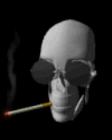题目内容
Want a glance of the future of health care? Take a look at the way the various networks of people about patient care are being connected to one another, and how this new connectivity is being exploited to deliver medicine to the patient —no matter where he or she may be.
Online doctors offering advice based on normal symptoms(症状) are the most obvious example. Increasingly, however, remote diagnosis(远程诊断) will be based on real physiological data(生理数据) from the actual patient. A group from the University of Kentucky has shown that by using personal data assistance plus a mobile phone, it is perfectly practical to send a patient’s important signs over the telephone. With this kind of equipment, the cry asking whether there was a doctor in the house could well be a thing of the past.
Other medical technology groups are working on applying telemedicine to rural(countryside) care. And at least one team wants to use telemedicine as a tool for disaster need—especially after earthquakes. On the whole, the trend is towards providing global access to medical data and experts’ opinions.
But there is one problem. Bandwidth(宽带) is the limiting factor for sending complex(复杂的) medical pictures around the world — CT photos being one of the biggest bandwidth users. Communication satellites may be able to deal with the short-term needs during disasters such as earthquakes or wars. But medicine is looking towards both the second-generation Internet and third-generation mobile phones for the future of remote medical service.
Doctors have met to discuss computer-based tools for medical diagnosis, training and telemedicine. With the falling price of broadband communications, the new technologies should start a new time when telemedicine and the sharing of medical information, experts’ opinions and diagnosis are common.
小题1: The writer chiefly talks about _______.
小题2:The basis of remote diagnosis will be _______.
小题3:Which of the following statements is true according to the text?
小题4:The “problem” in the fourth paragraph refers to the fact that _______.
Online doctors offering advice based on normal symptoms(症状) are the most obvious example. Increasingly, however, remote diagnosis(远程诊断) will be based on real physiological data(生理数据) from the actual patient. A group from the University of Kentucky has shown that by using personal data assistance plus a mobile phone, it is perfectly practical to send a patient’s important signs over the telephone. With this kind of equipment, the cry asking whether there was a doctor in the house could well be a thing of the past.
Other medical technology groups are working on applying telemedicine to rural(countryside) care. And at least one team wants to use telemedicine as a tool for disaster need—especially after earthquakes. On the whole, the trend is towards providing global access to medical data and experts’ opinions.
But there is one problem. Bandwidth(宽带) is the limiting factor for sending complex(复杂的) medical pictures around the world — CT photos being one of the biggest bandwidth users. Communication satellites may be able to deal with the short-term needs during disasters such as earthquakes or wars. But medicine is looking towards both the second-generation Internet and third-generation mobile phones for the future of remote medical service.
Doctors have met to discuss computer-based tools for medical diagnosis, training and telemedicine. With the falling price of broadband communications, the new technologies should start a new time when telemedicine and the sharing of medical information, experts’ opinions and diagnosis are common.
小题1: The writer chiefly talks about _______.
| A.the use of telemedicine | B.the on-lined doctors |
| C.medical care and treatment | D.communication improvement |
| A.personal data assistance |
| B.some words of a patient |
| C.real physiological information |
| D.medical pictures from the Internet |
| A.Patients don’t need doctors in hospitals any more. |
| B.It is impossible to send a patient’s signs over the telephone. |
| C.Many teams use telemedicine dealing with disasters now. |
| D.Broadband communications will become cheaper in the future. |
| A.bandwidth isn’t big enough to send complex medical pictures |
| B.the second-generation of Internet has not become popular yet |
| C.communication satellites can only deal with short-term needs |
| D.there is not enough equipment for spreading the medical care |
小题1:A
小题2:C
小题3:D
小题4:A
本文主要讲述人们将来可以通过网上看病,医生可以根据病人的生理数据做出远程诊断。随着第二代因特网和第三代移动手机为将来的远程医疗服务,尤其是宽带网交流价格的下降,远程医疗和医药信息、专家意见和诊断共享将成为家常便饭。
小题1:主旨题。第2段和第3段的内容,可知最佳答案为A。
小题2:细节题。从第2段第2句话中的…remote diagnosis(远程诊断) will be based on real physiological data(生理数据) from the actual patient 可以做出正确判断。
小题3:判断题。网上可以看病并不就是说病人去医院不需要医生,排除A项;通过电话发送病人的信息是可行的,排除B项;现在至少有一个医疗队想用远程医疗来治疗疾病,C项也不对;根据文章最后一句话With the falling price of broadband communications, the new technologies should start a new time when telemedicine and the sharing of medical information, experts’ opinions and diagnosis are common 可以肯定答案是D。
小题4:推断题。根据第4段第2句话 Bandwidth(宽带) is the limiting factor for sending complex(复杂) medical pictures around the world — CT photos being one of the biggest bandwidth users可知答案为A。

练习册系列答案
相关题目

 Few laws are so effective that you can see results just days after they take effect. But in the nine days since the federal cigarette tax more than doubled—to $1. 01 per pack—smokers have jammed telephone “quit lines” across the country seeking to kick the habit.
Few laws are so effective that you can see results just days after they take effect. But in the nine days since the federal cigarette tax more than doubled—to $1. 01 per pack—smokers have jammed telephone “quit lines” across the country seeking to kick the habit.